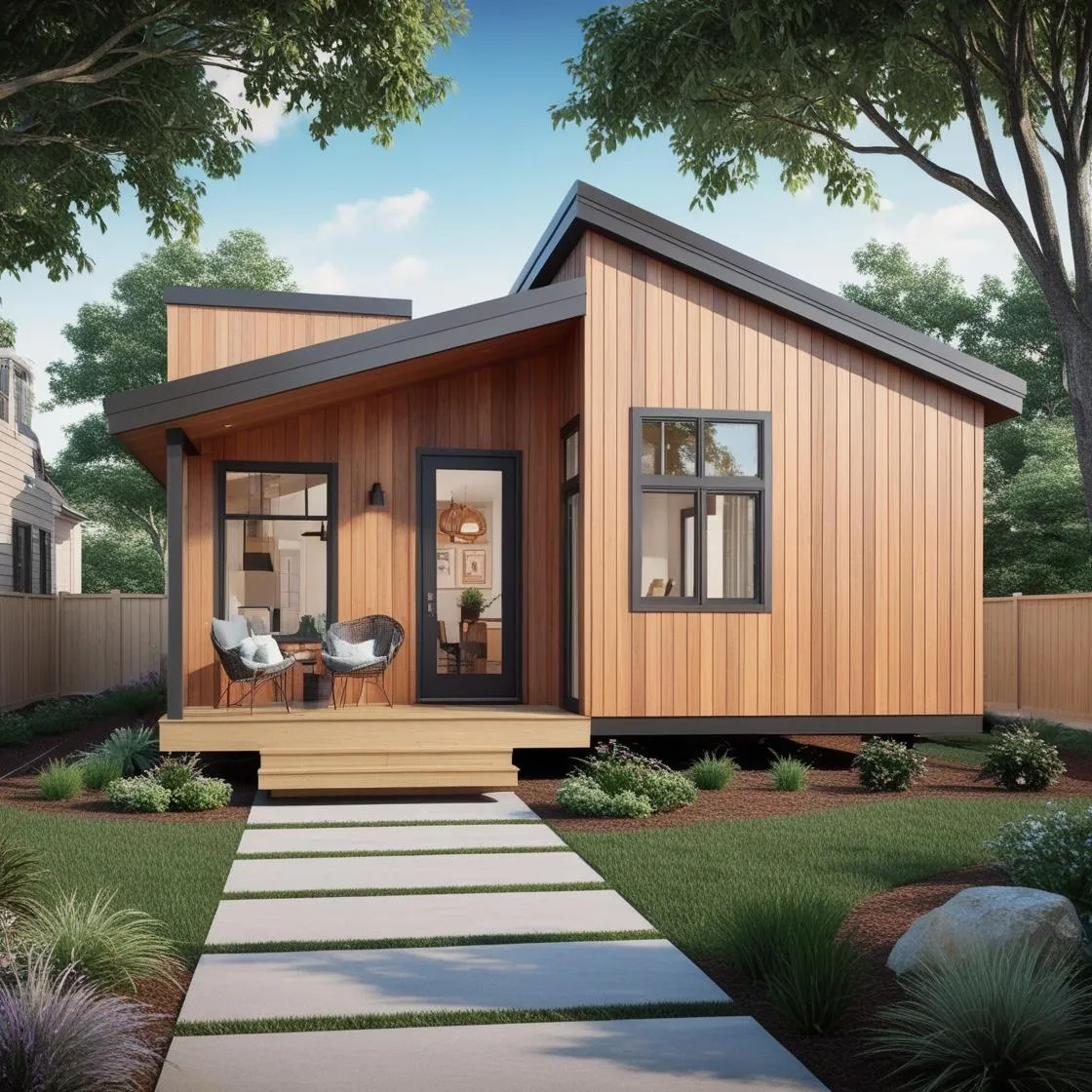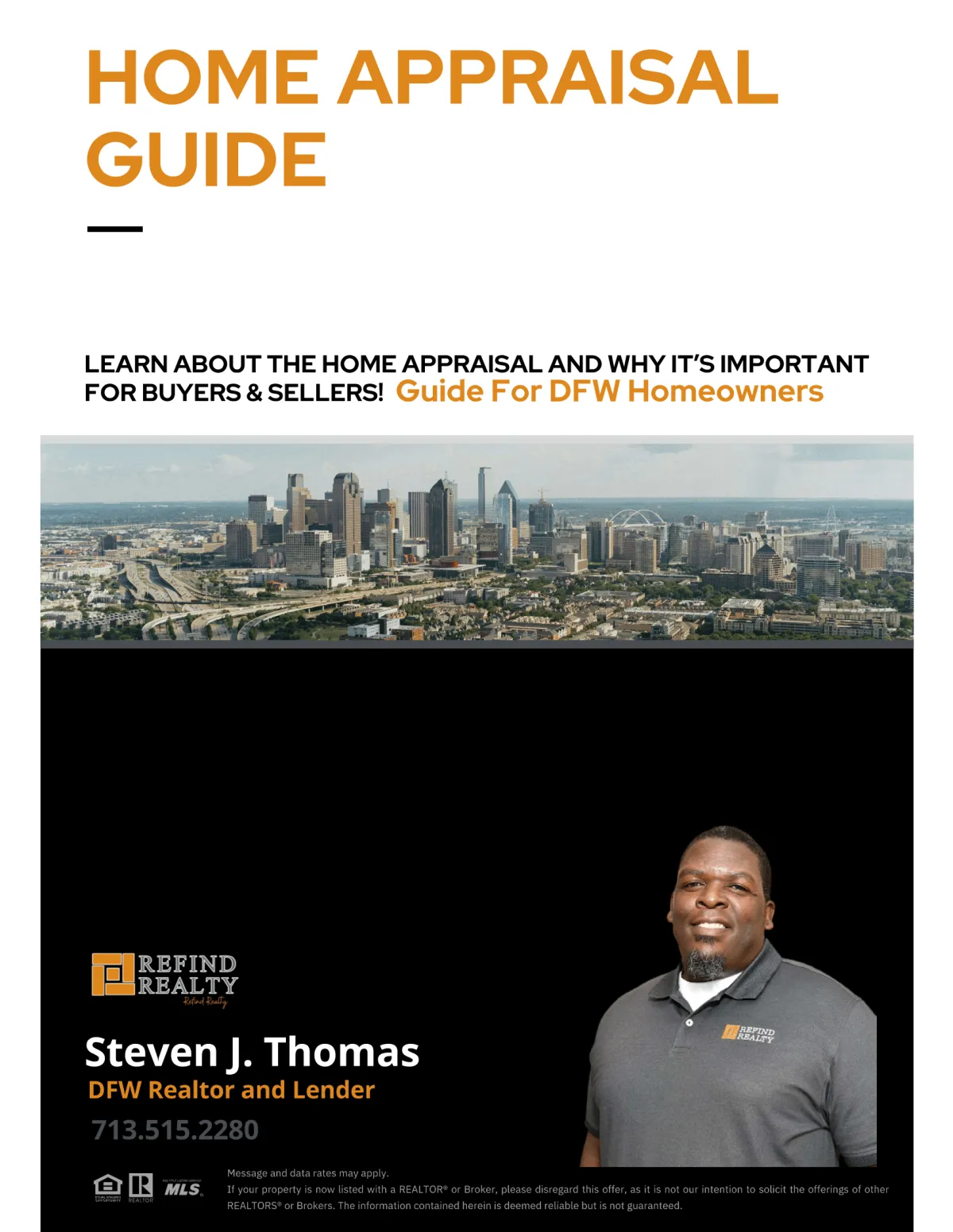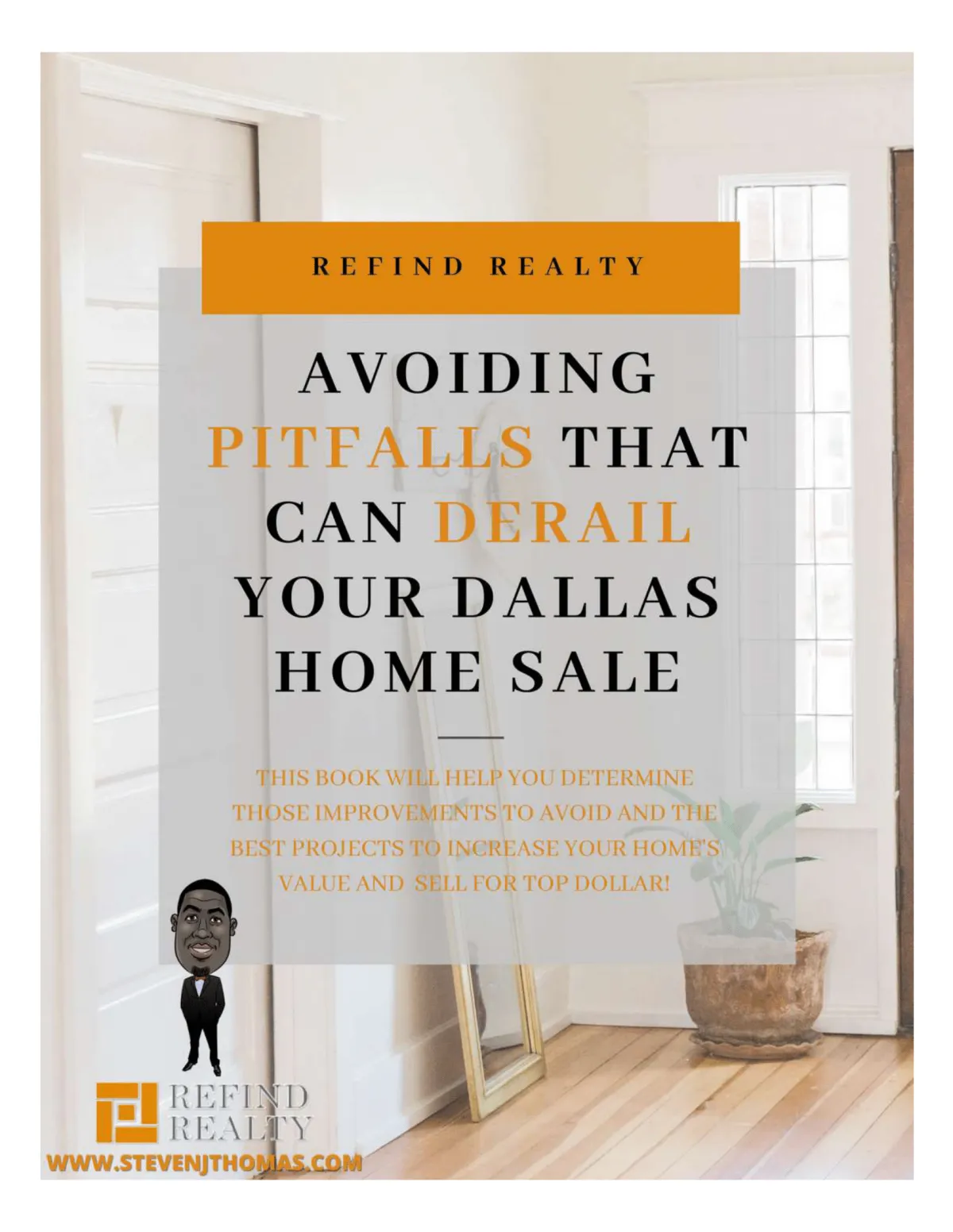You're Always At Home With Refind Realty.
Serving Your DFW Real Estate Needs Since 2005.
We Help You Buy and Sell in The Greater Dallas-Fort Worth Area.
Check Out Our Social Media Channels!
Buying in DFW
Buying your first or next home should be a rewarding and exciting time in your life, and one that you look back on with fond memories.
Thinking Of selling?
The market has changed a lot and I'd love to show you the exact strategy I use to get sellers in DFW top dollar for their property.
Get Pre-Approved
Let me walk you through the entire pre-approval process so you know exactly how much home you can afford.
Sign Up For my
Email List
My emails are a great way to stay up-to-date with local news and real estate market trends, even if you're not currently in the market. So, come on and join me to stay in the loop!
affordability Calculator
Get pre-approved to know exactly how much house you can afford. Use this calculator to get a quick estimate. Contact me for assistance!
DFW New Construction
Discover the latest new home constructions in DFW and take advantage of the builder incentives that are available now.
Let's Make Your real estate Dreams Come True.

Newest Listings
Call Me Today At (713) 505-2280

Refind Realty Blog:


The Trend Towards Smaller, Affordable Homes: What Buyers Need to Know
The Trend Towards Smaller, Affordable Homes: What Buyers Need to Know

In today’s bustling real estate market, it's no secret that finding an affordable home can feel like searching for a needle in a haystack, especially in the wake of rising interest rates and economic uncertainty. Surprisingly, there's a silver lining emerging on the horizon: builders are pivoting towards creating smaller, less costly homes. Let's explore this exciting trend and how it might just make your homebuying dreams more attainable.
Why the Shift to Smaller Homes?
The shift to smaller homes is not just a fleeting trend—it's a response to changing market dynamics and buyer preferences. After the pandemic, many of us were drawn to larger homes to accommodate remote work and family needs. However, with current economic conditions tightening budgets, builders have wisely adapted.
The Numbers Don’t Lie
Recent data reveals that homebuyers are now gravitating towards homes around 2,070 square feet, a noticeable drop from the 2,260 square feet average from 20 years ago, according to the National Association of Home Builders (NAHB). This evolution signifies an important change in consumer priorities.
What’s Driving This Change?
There are several factors fueling this trend towards smaller homes:
Affordability Concerns: With budgeting a top priority, many buyers are looking for homes that won’t break the bank. Smaller homes naturally come with smaller price tags.
Market Demand: Builders want to create what they know will sell, and smaller homes are in demand right now.
Economic Pressure: As inflation and interest rates put a strain on finances, the focus has shifted towards more economical living.
The Benefits of Buying Smaller Homes
Buying a smaller home can unlock a variety of advantages that go beyond just lower purchase prices. Here are a few compelling benefits:
1. Lower Costs Upfront
Reduced Purchase Price: Smaller homes generally mean smaller mortgage amounts.
More Negotiable Offers: Builders are often keen to sell and may offer incentives, paving the way for better terms.
2. Ongoing Savings
Lower Utility Bills: Smaller spaces typically require less energy to heat and cool.
Less Maintenance: Newer homes come with modern materials and technology, which can translate to fewer repairs over time.
3. Quality of Life Improvements
Easier Cleaning: With less square footage, home upkeep becomes more manageable.
Efficient Designs: New homes often feature smart layouts that maximize usable space without unnecessary square footage.
The Role of Builder Incentives
One of the most exciting aspects of this trend is the range of incentives builders are now offering.
Incentives on the Rise
According to recent findings from Zonda, over 50% of builders are providing attractive incentives to prospective buyers. Here are some of the most appealing options:
Mortgage Rate Buydowns: Lower initial payments help ease your financial burden.
Upgrades Included: Builders may offer premium fixtures or appliances at no extra cost.
Closing Cost Assistance: Some builders are willing to help cover these fees, making your move-in costs more manageable.
The Importance of Monthly Payments
John Burns, CEO of John Burns Research & Consulting, emphasizes that for many buyers, the monthly payment is paramount. Builders are responding thoughtfully to this need by:
Creating smaller, more efficient homes.
Offering financial incentives to keep monthly payments within budget.
The Perks of Going Brand New
Now, you might be wondering: why should I consider a newly built home? Let’s unpack a few reasons:
1. Modern Amenities
New homes come equipped with the latest features and technology, which can enhance your quality of life:
Smart home integrations (thermostats, security systems, and lights).
Energy-efficient appliances that save money over time.
2. Flexibility in Customization
Many builders allow buyers to personalize homes to a certain extent, offering options that cater to individual tastes and needs.
3. Warranty Benefits
Buying new often means enjoying warranties on major systems and appliances, providing peace of mind for the new homeowner.
Making the Most of Your Homebuying Journey
So, what can you do to take advantage of this trend toward smaller homes? Here are some actionable tips:
1. Work with a Real Estate Agent
Partnering with an experienced local agent who understands the market can simplify your search. They can help you navigate available inventory and negotiate on your behalf.
2. Explore Different Locations
Sometimes, expanding your search area can yield better price options. Consider neighborhoods that may not initially be on your radar.
3. Be Open-Minded
While a smaller footprint might feel limiting at first, think creatively about how to maximize your space. Flexible rooms can serve multiple functions.
4. Investigate Builder Incentives
Always ask about available incentives! Builders want to sell, and they may have unique offers that could significantly impact your budget.
Conclusion
In today’s evolving real estate landscape, smaller, more affordable homes present an exciting opportunity for savvy buyers. With builders pivoting to meet our budget-conscious demands, there’s never been a better time to explore what’s available in new home construction. Remember, these smaller homes come with perks like reduced costs and modern amenities that can significantly enhance your living experience. So, whether you're a first-time buyer or looking to downsize, there's a treasure trove of options waiting for you.
Frequently Asked Questions (FAQs)
1. Why are smaller homes more affordable?
Smaller homes generally have lower construction costs and require less energy to maintain, making them more budget-friendly.
2. What incentives are builders currently offering?
Incentives can include mortgage rate buydowns, closing cost assistance, and upgrades or special features included in the purchase price.
3. How can I find newly built homes in my area?
Consider reaching out to a local real estate agent or using online real estate platforms that list new constructions.
4. Are smaller homes a good investment?
Absolutely! As demand for affordable housing continues to grow, smaller homes can appreciate in value while providing lower ongoing costs.
5. What should I consider when buying a smaller home?
Think about your lifestyle needs, potential for customization, and how to utilize the space effectively to make the most of your living area.
Stay Informed With My Downloadable
Buyer and Seller guides

6 Smart Ways to Build Home Equity

7 Insider Secrets To Selling Your Home w/o a Lot of Time or Money

DFW Home Seller Negotiation Secrets

Home Appraisals Guide

Avoiding Pitfalls That Can Derail Your Home's Sale

Ultimate Guide To Buying a Home

A First Time Homebuyers Guide In DFW

Are You Ready To Buy?

25 Insider Secrets To Buying A Home

How to Improve Your Credit
Download All My Guides For Free
(I'll send you all 10)


Steven J. Thomas
Steven J. Thomas has been in the financial services industry for the past 19 years and started my career as a Financial Planner for American Express Financial Advisors. I entered into banking with JP Morgan Chase as personal banker in 2003 and was promoted several times up to Small Business Specialist. I earned multiple Million Dollar Club awards and was ranked in the top 5 Small Business Specialist before I branched out in 2005 to start my own Financial Management Company. I ran a successful company before family circumstances lead me to Wachovia Bank in 2008 where I worked as a Senior Financial Specialist. As a Sr. Financial Specialist; I was responsible for the P & L and revenue growth of my banking center. The elimination of my role thru a bank merger lead me to BBVA Compass. I have held various leadership roles at BBVA Compass including Personal Relationship Manager, Branch Retail Executive, Workplace Solutions VP, and his current role as a Retail Manager. As the Regional Workplace Solutions VP, I was responsible for the strategic, tactical, and execution of Partnership Banking relationships, promotion and activity with corporate and non-profit companies in my footprint. I was responsible for the acquisition production for three districts, which includes 51 banking centers and over 300 employees. In May of 2014, I joined the team at Refind Realty and became one of the managing partners in mid-2015.
50+ 5 Star Reviews
Over $60,000,000 in Total Real Estate Sales
167 Properties Sold

Wondering What Your DFW Home Could Be Worth in April 2024?
Get a Professional Home Valuation From A Local Market Expert
Unlock insights into potential selling prices.
Get a personalized analysis sent directly to your inbox.
Stay ahead with updates on property value fluctuations.
Benchmark your property against neighborhood listings.
Get a FREE Home Valuation And Potential Net Sheet:


I used this realtor and it was a great experience. He was patient and very helpful with our journey. He also helped us find a great lender with little hassle on the process, also got us approved for well above the market of our original home so we were able to get more house with a lower mortgage rate. So to anyone who is interested in buying a home take my advice give Steven a call. It’s worth it 😁
Bryant Loring


Steve was absolutely amazing! Everything was easy! Very professional in all aspects. Punctual, responsive, and diligent. He goes above and beyond to ensure you get to see as many homes as you’d like no matter the location. Not only was he knowledgeable about home buying, he also has a resourceful network for new home owner needs. I recommend Refind Realty to everyone!
Nicholas Bishop


I definitely recommend Steven to assist with your home buying needs. As a first time home buyer the process can be overwhelming, but as my realtor he was knowledgeable & patient while addressing my concerns and assisting me with my new home purchase. Thanks again Steven!! :-)
Gayle Mason

Ask Us Anything
Frequently Asked Questions
Why do you need a Realtor?
When buying or selling a home, there are so many options…which can also present a lot of obstacles. Laws change, forms change, and practices change all the time in the real estate industry. Because it’s our job to stay on top of those things, hiring a realtor reduces risk, and can also save you a lot of money in the long run.
When you work with me as your Realtor, you’re getting an expert who knows the area; knows how to skillfully guide your experience as a seller or buyer; can easily spot the difference between a good deal and a great deal. My job is to translate your dream into a real estate reality, and I work hard to earn and keep my business. This also means earning your trust: When you work with me, you’ll be working with a realtor who looks out for your best interests and is invested in your goals.
Which loan should you choose?
There are two different types of loans conventional loans and government-backed loans. The main difference is who insures these loans:
1 - Government-backed loans (FHA, VA and USDA):
(a) - Are, unsurprisingly, backed by the government.
(b) - Include FHA loans, VA loans, and USDA loans.
(c) - Make up less than 40 percent of the home loans generated in the U.S. each year.
2 - Conventional loans
(a) - Are not backed by the government.
(b) - Include conforming and non-conforming loans (such as jumbo loans).
(c) - Make up more than 60 percent of the loans generated in the U.S. each year.
What is the difference between FHA, VA and USDA loans?
1 - FHA LOANS:
FHA loans, which are insured by the Federal Housing Administration, are typically designed to meet the needs of first-time homebuyers with low or moderate incomes. FHA loans can be approved with a down payment of as little as 3.5 percent and a credit score as low as 580.
FHA loans are often called “helper loans,” because they give a leg up to potential borrowers who may not be able to secure one otherwise. For this reason, FHA loans have maximum lending limits, which are determined based on housing values for the county where the for-sale home is located.
Because the agency is taking on more risk by insuring FHA loans, the borrower is expected to pay mortgage insurance both at the time of closing and on a monthly basis, and the property must be owner-occupied.
2 - VA LOANS:
VA loans are backed by the Department of Veterans Affairs and they are guaranteed to qualified veterans and active-duty personnel and their spouses. VA loans can be approved with 100 percent financing, meaning VA borrowers are not required to make a down payment.
Unlike FHA loans, borrowers do not have to pay mortgage insurance on VA loans.
3 - USDA LOANS:
You may also hear about USDA loans, which are backed by the United States Department of Agriculture mortgage program. USDA loans are intended to support homeowners who purchase homes in rural and some suburban areas. USDA loans do not require a down payment and may offer lower interest rates; borrowers may have to pay a small mortgage insurance premium in order to offset the lender’s risk.
What’s a conventional loan? Understanding what it means to be conforming and non-conforming
Buyers who have a more established credit history and a larger down payment may prefer to apply for a conventional loan. These loans may offer a lower interest rate and only require the home buyer to purchase monthly mortgage insurance while the loan-to-value ratio is above a certain percentage, so a conventional loan borrower can typically save money in the long run.
Conventional loans are divided into two types: Conforming loans and non-conforming loans.
1 - CONFORMING LOANS:
Conforming loans are those that meet (or conform to) predetermined standards set by Fannie Mae and Freddie Mac — two government-sponsored institutions that buy and sell mortgages on the secondary market. By selling the loans to "Fannie and Freddie," lenders can free up their capital and return to issue more mortgages than if they had to personally back every loan that they approve.
The main standard for conforming loans is that the amount borrowed must be under a certain amount; in Alaska, a single-family home loan must be under $647,200 in order to be considered conforming.
Properties with more than one unit have higher limits.
2 - NON-CONFORMING (JUMBO) LOANS:
But what happens if a borrower wants to borrow more than the Freddie- and Fannie-approved loan amount? In this case, they would have to apply for a “jumbo loan,” which is the most common type of non-conforming loan.
Because the lender cannot resell the jumbo loan (or any non-conforming loan) to Freddie Mac or Fannie Mae, jumbo loans are considered to be riskier than a conforming loan. To protect against this risk, the bank will typically require a higher down payment; the interest rate on a jumbo loan may also be higher than if the same borrower applied for a conforming loan.
What kind of rate should you choose?
Rate types: Fixed-rate vs. adjustable-rate mortgages.
In addition to the loan type you choose, you’ll also have to determine if you want a fixed-rate mortgage or an adjustable-rate mortgage (ARM). A fixed-rate mortgage has an interest rate that does not change for the life of the loan, so it provides predictable monthly payments of principal and interest.
An adjustable-rate mortgage typically offers an initial introductory period with a low-interest rate. Once this period is over, the interest rate adjusts periodically, based on the market index. The initial interest rate on an ARM can sometimes be locked in for different periods, such as one, three, five, seven, or 10 years. Once the introductory period is over, the interest rate typically readjusts annually.
Office 1229 E. Pleasant Run Ste 224, DeSoto TX 75115
Call :(713) 505-2280
Email: [email protected]
Site: www.stevenjthomas.com

Facebook
Instagram
X
LinkedIn
Youtube
TikTok